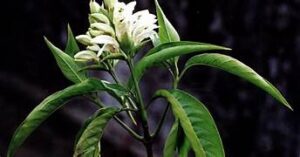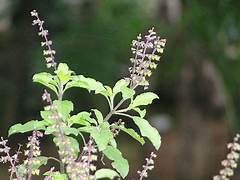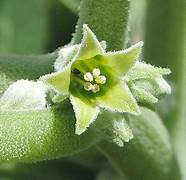Medicinal Plants and Their Usage
Introduction
Plants are employed in different medicinal systems and ethnic medicines. Medicinal plants (also called Medicinal herbs), have been used in traditional medicine practices since prehistoric times.
Naturally plants synthesize hundreds of chemical compounds for various functions, including defense and protection against insects, fungi, diseases, against parasites and herbivorous mammals. Angiosperms (flowering plants) were the original source of most plant medicines.
History
India has rich tradition of herbal medicines and it has outstanding contributions not only in form of Ayurveda & Siddha but also in the discovery of modern drugs and pharmacological research. From ancient times to the present, Ayurvedic medicine as documented in the Atharva Veda, the Rig Veda and the Sushruta Samhita & Charaka Samhita has used hundreds of herbs and spices, such as turmeric, which contains curcumin.
In the 400 BC, Theophrastus wrote the first systematic botany text, Historia plantarum. In around 60 AD, the Greek physician Pedanius Dioscorides, working for the Roman army, documented over 1000 recipes for medicines using over 600 medicinal plants in De materia medica. The book remained the authoritative reference on herbalism for over 1500 years, into the seventeenth century. The Food and Agriculture Organization estimated in 2002 that over 50,000 medicinal plants are used across the world.
However, many plant medicines have often not been tested systematically, but have come into use informally over the centuries. In India, where Ayurveda has been practised for centuries, herbal remedies are controlled by government department, AYUSH, under the Ministry of Health & Family Welfare.
Phytochemicals
All plants produce various chemical compounds (e.g. salicylic acid) which give them an evolutionary advantage and defense from such as herbivores. Various kind of phytochemicals have potential for use as drugs. For instance, daffodils (Narcissus) contain nine groups of alkaloids including galantamine, licensed for use against Alzheimer’s disease. The alkaloids are bitter-tasting and toxic, and concentrated in the parts of the plant such as the stem most likely to be eaten by herbivores; they may also protect against parasites.
Major classes of plant phytochemicals are:
- Alkaloids: These are often toxic, bitter-tasting chemicals, widespread in nature, found in many medicinal plants. There are several classes with different modes of action as drugs, both recreational and pharmaceutical. Medicines of different classes include atropine, scopolamine, and hyoscyamine (all from nightshade), the traditional medicine berberine (from plants such as Berberisand Mahonia), caffeine (Coffea), cocaine (Coca), ephedrine (Ephedra), morphine (opium poppy), nicotine (tobacco), reserpine (Rauvolfia serpentina), quinidine and quinine (Cinchona), vincamine (Vinca minor), and vincristine (Catharanthus roseus).
- Glycosides: Medicinal plants such as rhubarb, cascara, and Alexandrian senna are source of Anthraquinone glycosides. Plant-based laxatives made from such plants include senna, rhubarb and Aloe. The cardiac glycosides are powerful drugs from medicinal plants including foxglove and lily of the valley. They include digoxin and digitoxin which support the beating of the heart, and act as diuretics.
- Polyphenols: These are of several classes widespread in plants, having diverse roles in defenses against plant diseases and predators. They include hormone-mimicking phytoestrogens and astringent tannins. Plants containing phytoestrogens have been administered for centuries for gynaecological disorders, such as fertility, menstrual, and menopausal problems. Among these plants are Pueraria mirifica, kudzu, angelica, fennel, and anise. Many polyphenolic extracts, such as from grape seeds, olives or maritime pine bark, are sold as dietary supplements and cosmetics. In Ayurveda, the astringent rind of the pomegranate, containing polyphenols called punicalagins, is used as a medicine.
- Terpenes: Terpenes and terpenoids of many kinds are found in a variety of medicinal plants, and in resinous plants such as the conifers. They are strongly aromatic and serve to repel herbivores. Their scent makes them useful in essential oils, whether for perfumes such as rose and lavender, or for aromatherapy.
Major Indian Medicinal Plants and Their Usage
Though, there are hundreds of medicinal plants discovered and used as medicinal herbs. Here are some key medicinal plants used in India with their usage.
- Adusa- Malabar Nut(Adhatoda vasica Nees): It is Known for its effectiveness in treating respiratory ailments, as it helps in managing coughs, asthma, and bronchitis. Its expectorant properties make it useful for alleviating congestion and promoting easier breathing, thus supporting overall respiratory health.

- Babool–Indian Gum(Acacia arabica Willd): Apart from oral hygiene, this plant offers multiple health benefits. It is used to treat bleeding gums, mouth ulcers, and wounds. Its astringent properties help in tightening tissues and facilitating wound healing, contributing to overall oral and skin health.
- Brahmi–Thyme-Leaved Gratiola(Bacopa monnieri Pennel): It is known for its cognitive benefits, enhancing memory and concentration. It also helps in reducing anxiety and stress, promoting mental clarity and overall cognitive function. Its adaptogenic properties support mental resilience and emotional well-being.
- Kalmegh–Kalmegh(Andrographis paniculata): It is known for its detoxifying and digestive benefits. It aids in relieving indigestion, treating acne, and managing diarrhoea. Its strong anti-inflammatory properties also support liver health, enhancing its ability to detoxify the body.
- Tulsi –Holy Basil(Ocimum sanctum Linn): Tulsi is a revered herb with numerous health benefits, including supporting digestive health, cardiovascular function, and respiratory wellness. Its adaptogenic properties help in managing stress, while its anti-inflammatory effects promote overall immune health.

- Ashgandh–Winter Cherry(Withania somnifera Dunal): Ashgandh is valued for its stress-relieving and immune-boosting properties. It helps manage joint pain and promotes skin health, enhancing overall physical and mental well-being through its adaptogenic effects.

- Amla–Indian Gooseberry(Emblica officinalis Linn): Amla is a potent antioxidant that aids in managing stress, constipation, and fever. Its rich vitamin C content supports immune function and overall health, contributing to well-being and vitality.
- Nagarmotha–Nut Grass(Cyperus rotundus Linn): It is useful in treating fever and managing diabetes due to its blood sugar-lowering properties. It also aids in relieving solar dermatitis, a skin condition caused by excessive sun exposure, promoting skin health and overall well-being.
- Punarnava–Spreading Hogweed(Boerhaavia diffusa Linn): Punarnava is known for its ability to support kidney health and manage anemia. It aids in liver detoxification, wound healing, and alleviating edema. Its diuretic properties help in maintaining fluid balance and reducing swelling.
- Shalparni–Shal Leafed Bush(Desmodium gangetium DC): Shalparni is recognized for its analgesic and anti-inflammatory properties, making it effective in relieving pain and reducing inflammation. It is used to manage conditions like arthritis and muscle soreness, contributing to overall joint health.
- Ashok–Sorrowless Tree(Saraca indica): Ashok is known for its benefits in managing menstrual irregularities and stimulating uterine health. Its properties support reproductive health and alleviate menstrual discomfort.
- Guggulu–Indian Bdelium(Commiphora mukul Engl): Guggulu is valued for its effectiveness in treating joint disorders, heart diseases, and lowering lipid levels. Its anti-inflammatory properties contribute to overall cardiovascular and musculoskeletal health.
- Agarkasth–Eagle Wood(Aquilaria agallocha Roxb): It has been using for long time to address urinary bladder issues and bed-wetting. Its calming properties also support bladder health and help in managing urinary incontinence.
- Elaichi– Lesser Cardamom(Elettaria cardamomum Maton): Lesser Cardamom is effective in treating nausea, vomiting, and dry cough. Its aromatic properties also contribute to digestive health by alleviating gastrointestinal discomfort and enhancing overall digestive function.
- Badi Elaichi–Greater Cardamom(Amomum subulatum Pennel): Greater Cardamom is valued for its digestive benefits, acting as an appetizer and aiding in digestion. It also helps manage bronchitis and asthma, providing relief from respiratory discomfort and supporting overall lung health.
- Chirchita–Prickly Chaff Flower(Achyranthes aspera): Chirchita is used to treat indigestion, coughs, and asthma. Its therapeutic properties extend to improving liver health and managing respiratory conditions, making it a versatile herb in traditional medicine.
- Ankol–Sage Leaf Alangium(Alangium salvifolium): Ankol is traditionally used in treating bites from snakes, scorpions, and dogs. Its therapeutic properties provide relief from envenomation symptoms, making it a valuable remedy in emergency situations involving animal bites.
- Kanghi–Country Mallow(Abutilon indicum): Kanghi acts as a nervine tonic, supporting nervous system health and improving strength. It is also used for managing joint disorders, contributing to overall vitality and well-being through its restorative properties.
- Malakangini–Staff Tree(Celastrus paniculatus Willd): Malakangini is known for its benefits in relieving muscle cramps, backaches, and osteoarthritis. It also promotes hair care, improving scalp health and reducing hair fall through its rejuvenating properties.
- Neem–Margosa Tree(Azadirachta indica A. Juss): Neem is renowned for its comprehensive therapeutic benefits, including skin health, eye disorders, and treatment of intestinal worms. Its antimicrobial and anti-inflammatory properties make it a versatile remedy for various health issues.
- Pyaj–Onion(Allium cepa Linn): Onion is beneficial for prostate health and digestive support. Its compounds have anti-inflammatory and antioxidant effects, aiding in digestion and promoting overall well-being by supporting prostate and gastrointestinal function.
- Shatavari –Asparagus(Asparagus racemosus Willd): Shatavari supports reproductive health by addressing infertility, improving libido, and promoting uterine health. It also enhances lactation in nursing mothers, providing comprehensive support for women’s health.
- Mulethi–Liquorice(Glycyrrhiza glabra Linn): Mulethi is used for digestive disorders, ulcers, bronchitis, and skin health. Its soothing properties support gastrointestinal health, ease respiratory conditions, and promote overall skin wellness.
- Yavasa–Camel Thorn(Alhagi camelorum): Yavasa is effective in treating rheumatism, vomiting, stomachaches, and constipation. Its digestive and anti-inflammatory properties support gastrointestinal health and alleviate discomfort associated with these conditions.
- Akarkara–Pellitory(Anacyclus pyrethrum): Akarkara is used to alleviate toothache, dryness of the mouth and throat, and catarrh. Its stimulating properties help enhance appetite and digestive function, contributing to overall oral and digestive health.
- Ananas–Pineapple(Ananas comosus): It possesses high content of vitamin C, aiding in immune system support and reducing inflammation. It is beneficial for soothing sore throats, managing diabetes through its insulin-like properties, and addressing heart disease and obesity due to its enzyme bromelain.
- Bael–Bengal Quince(Aegle marmelos Corr.): Bael is known for its cooling effects on the body and digestive benefits. It helps manage dysentery, diabetes, and supports gut health by promoting proper digestion and easing gastrointestinal discomfort.
- Chitrak–Leadwort(Plumbago zeylanica Linn): Chitrak is used to treat arthritis, skin diseases, and menstrual disorders. Its therapeutic properties support weight management and contribute to overall wellness through its anti-inflammatory and detoxifying effects.
- Ghee Kunwar–Aloes(Aloe vera Tourn ex. Linn): Ghee Kunwar is effective in treating ulcers, burn injuries, jaundice, and acne. Its soothing and healing properties aid in skin repair and overall health, providing relief from various dermatological conditions.
- Ketaki –Crepe Ginger(Costus speciosus (Koeing) Sm.): Ketaki is beneficial for managing obesity, hyperlipidemia, and diabetes. Its properties aid in regulating metabolism and supporting weight management, contributing to overall metabolic health.
- Mandukparni–Gotu Kola(Centella asiatica Urban): Mandukparni supports cognitive function, memory enhancement, and hair care. Its rejuvenating properties contribute to brain health and overall vitality, improving mental clarity and hair strength.
- Palasha–Flame of the Forest(Butea monosperma Kuntze): Palasha helps in improving skin complexion, treating worm infestations, and managing roundworm infections. Its therapeutic properties support skin health and digestive wellness.
- Ratti –Rosary Pea(Abrus precatorius): Ratti is used to treat joint pains, fungal skin infections, and alopecia. Its properties help in alleviating pain and promoting skin and hair health, contributing to overall physical well-being.
- Shirish–Siris Tree(Albizia lebbeck (Linn) Benth Pennel): Shirish is effective in managing bronchial asthma and supporting detoxification. Its properties help cleanse the body and support respiratory health, contributing to overall well-being.
- Bach–Sweet Flag(Acorus calamus): Bach is used for treating flatulent colic, atonic dyspepsia, and ulcers. Its digestive and carminative properties aid in alleviating gastrointestinal discomfort and promoting digestive health.
- Amaltas–Indian Laburnum(Cassia fistula Linn): Amaltas serves as a mild laxative, aiding in the treatment of ulcers and wounds. Its gentle purgative properties support digestive health and wound healing.
- Chitvan–Dita(Alstonia scholaris): Chitvan is beneficial for treating skin ulcers, fever, and increasing lactation. Its therapeutic properties support skin health and enhance milk production in nursing mothers.
- Bharangi–Bharangi(Clerodendron serratum Moon): Bharangi is used to treat common cold, chronic sinusitis, and allergic rhinitis. Its soothing properties support respiratory health and help alleviate symptoms of nasal congestion and sinus inflammation.
- Dhaniya –Coriander(Coriandrum sativum Linn): Coriander seeds are used for their digestive benefits, as it helps to alleviate indigestion, flatulence, and abdominal discomfort. They also have anti-spasmodic properties that can ease cramping and pain, and their mild flavour makes them a versatile culinary herb.
- Chandan–Sandalwood(Santalum album): Renowned for its cooling and soothing effects on the skin hence, it is used to treat skin disorder like acne and eczema. Its aromatic properties make it beneficial for relaxation and mental clarity.
- Kadirkasth–Cutch Tree(Acacia catechu Willd): It is also used for skin and respiratory problems, oral hygiene, and as an astringent. Its therapeutic properties aid in treating various skin conditions and supporting oral health.
- Meetha Vish–Monkshood(Aconitum ferox): Meetha Vish is used for managing fever, providing diuretic action, and treating arthritis. Its properties support fever reduction and joint health through its potent therapeutic effects.
- Patha– Velvet Leaf Tree(Cissampelos pareira Linn): Patha is used to treat ulcers, sinus issues, skin diseases, and poisonous bites. Its therapeutic properties support wounds healing.
- Senna–Indian Senna(Cassia angustifolia Vahl): Senna is utilized as a laxative and for treating constipation, irritable bowel syndrome, and weight loss. Its natural laxative effects support digestive health and promote regular bowel movements.
- Supari–Areca Nut/Betelnut(Areca catechu Linn): Supari is employed for managing obesity, hyperlipidaemia, diabetes, and irregular menstruation. Its properties aid in controlling weight, supporting metabolic health, and regulating menstrual cycles.
- Vajradanti–Barleria(Barleria prionitis Linn): Vajradanti strengthens teeth and is useful in managing fever and catarrh. Its medicinal properties contribute to oral health and help alleviate symptoms associated with fever and respiratory conditions.
- Lashun –Garlic(Allium sativum): Garlic is known for its antimicrobial and anti-inflammatory properties. It helps in treating ringworm, dysentery, and wounds. It is found that regular consumption supports cardiovascular health by reducing blood pressure and cholesterol levels.
- Atees–Indian Atees(Aconitum heterophyllum Wall): It is used for treating respiratory issues. Its therapeutic properties help in reducing fever and supporting respiratory health.
- Bhojpatra–Himalayan Birch(Betula utilis D. Don): Bhojpatra aids in wound healing and managing obesity. Its therapeutic properties support skin repair and weight management.
- Dalchini–Bark Cinnamon(Cinnamomum zeylanicum Breyn): Dalchini is known for its antibacterial and antiseptic properties. It aids in managing infections, promoting oral health, and supporting overall digestive and metabolic function.
- Jimikand–Elephant Yam/Foot yam(Amorphophallus campanulatus): Jimikand is beneficial for treating dysentery, piles, and haemorrhoids. Its therapeutic properties support digestive health and provide relief from gastrointestinal discomfort and related conditions.
- Kulanjan–Greater Galangal(Alpinia galanga): Kulanjan helps with flatulence, dyspepsia, vomiting, motion sickness, and catarrh. Its digestive and carminative properties contribute to gastrointestinal health and alleviate discomfort from digestive issues.
- Haritaki–Chebulic Myrobalan(Terminalia chebula): It is known for its powerful detoxifying work and for digestive benefits. It helps in relieving constipation, improving gut health, and balancing the digestive system. Its antioxidant properties help in rejuvenating cells, enhancing overall health, and promoting longevity.
- Pippali–Long Pepper(Piper longum Linn): Pippali aids in treating asthma, cough, and indigestion. Its stimulating properties enhance digestive function and respiratory health, contributing to overall well-being and vitality.
- Shalai Guggal–Indian Olibanum(Boswellia serrata Roxb.): Shalai Guggal is used for joint pains, headaches, and diabetes. Its anti-inflammatory properties support musculoskeletal health and contribute to overall pain relief and metabolic balance.
- Tamalpatra–Cinnamon Leaf(Cinnamomum tamala Nees): Tamalpatra aids in managing diabetes, digestion, and cold symptoms. Its properties support metabolic health and provide relief from digestive discomfort and respiratory issues.
- Jatamansi–Spikenard(Nardostachys jatamansi): Jatamansi is highly valued for its calming and sedative properties, making it effective in treating anxiety, insomnia, and stress-related disorders. It also supports cognitive function by enhancing memory and concentration, and its anti-inflammatory properties can help with joint pain.
- Varun–Three-Leafed Caper(Crataeva nurvala Buch-Ham): Varun is utilized for treating kidney stones, bladder stones, and prostate health. Its diuretic properties help in managing urinary tract issues and supporting overall renal function.
- Vridhadaru–Elephant Creeper(Argyreia speciosa Sweet): In Ayurveda, Vridhadaru is used for managing diabetes and promoting skin health. Due to its anti-inflammatory and regenerative properties, it helps in wound healing, accelerate recovery and improve overall skin condition.
- Ulatkambal–Devil’s Cotton(Abroma augustum): Ulatkambal is used to manage gynecological problems and irregular menstrual cycles. Its therapeutic properties support hormonal balance and menstrual health, contributing to overall reproductive wellness.